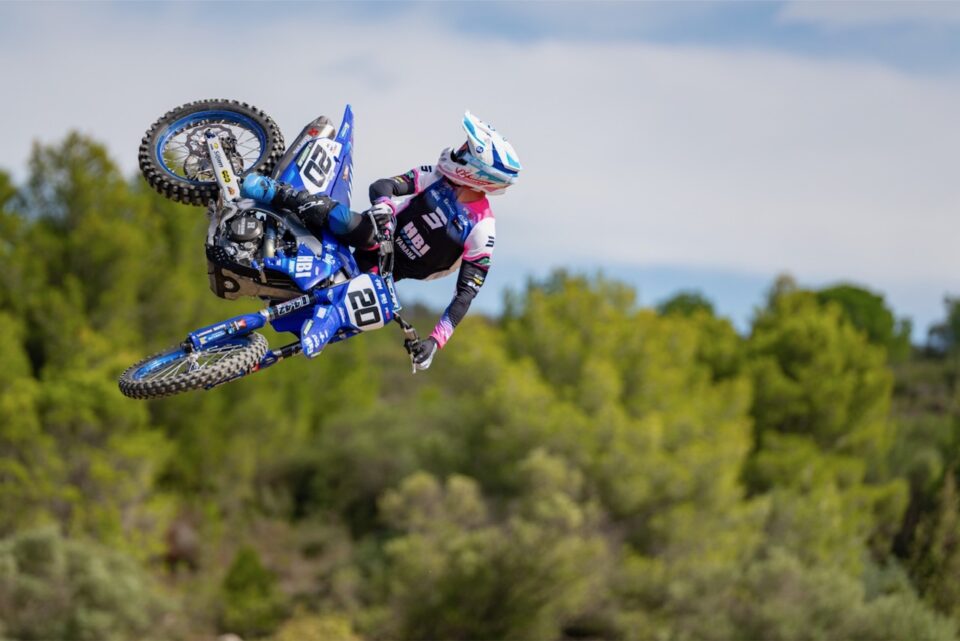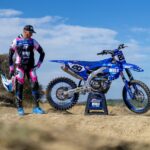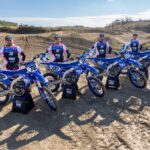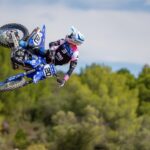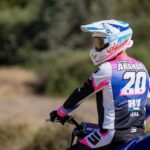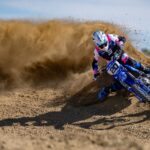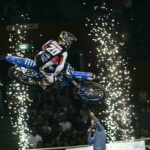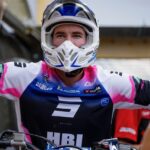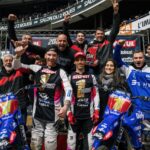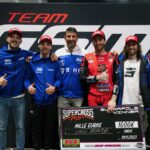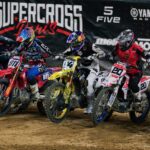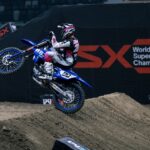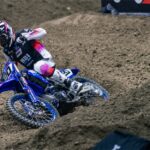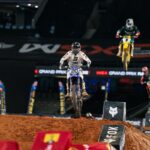Is Greg Aranda (GSM Yamaha) the world’s most underestimated SX rider? Quite possibly. The hard-charging Frenchie is a quintuple German SX champion, currently leads the French SX1 series and beat some of the fastest guys in the world in Paris SX Superpole.
He’s quirky, spectacular and highly esteemed by his colleagues. Interestingly, Aranda is riding better than ever at the age of 35. We sat down with him a few weeks before the start of the FIM World Supercross season in Canada.
Admittedly supercross is a young man’s game but Aranda’s achievements in the fall of his career puts him in illustrious company. Justin Brayton, Mike Larocco, Chad Reed, Kevin Windham and Marvin Musquin all remained very competitive well into their thirties. Unlike the riders above it took Greg 19 professional seasons -he made his MX2 GP debut at 16- to reach this level.
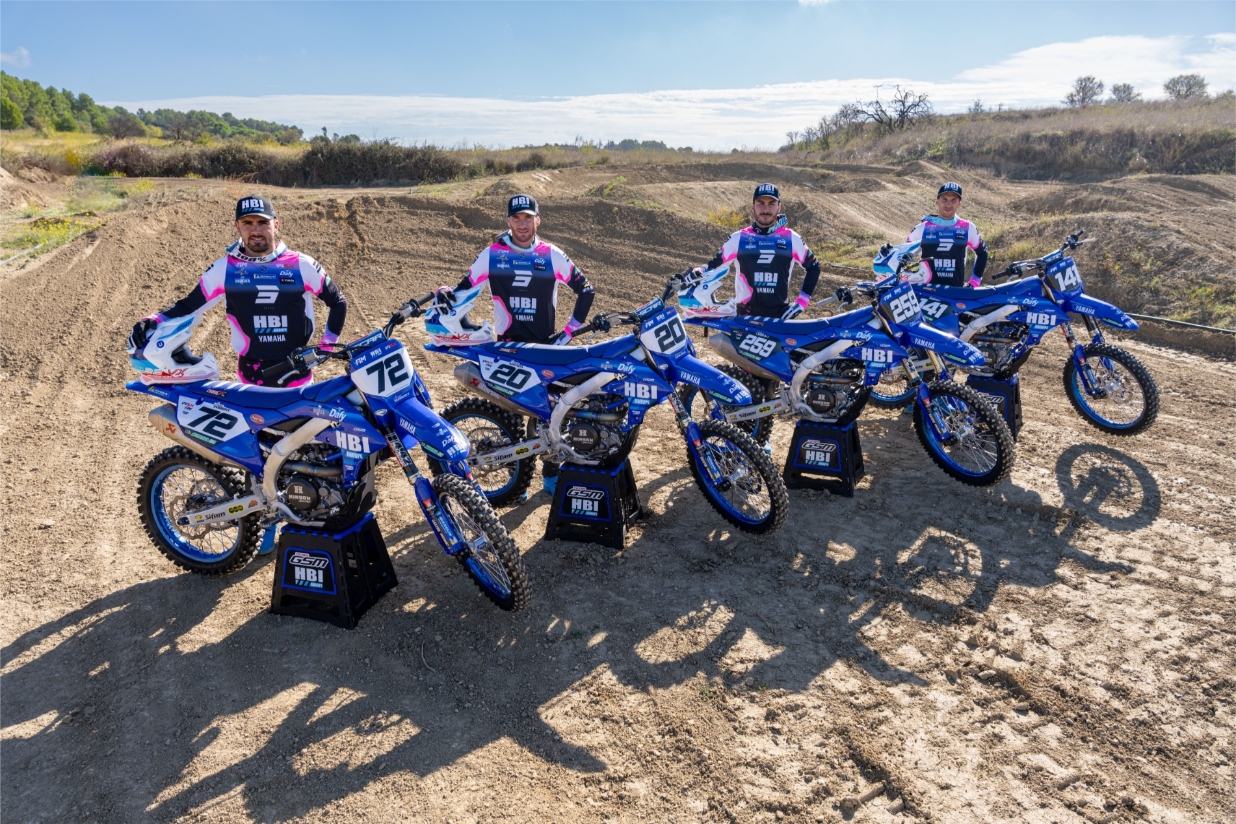
Talking wine to a Frenchman is a delicate subject, but would you agree with the ‘like fine wine’ comparison as far as the upturn of the last 18 months is concerned? French and German SX1 titles, Superpole at SX Paris in front of Ken Roczen, the Lawrence brothers, Cédric Soubeyras and Cooper Webb, 6th in World Supercross it’s a remarkable run to say the least.
Greg Aranda: “It’s probably true that I’m riding better than ever. In the past I was never able to remain at the top of my game for such a long period of time. Also I would often have the speed to run upfront, although not in a controlled manner. Developing that pace before meant being close to riding out of control. If I have reached this level now is not only thanks to my own efforts. The GSM Yamaha team have been a fantastic support in all of this.”
So how did you make that switch? In hindsight there’s always a logic, especial with your kind of riding abilities, however you’d almost fallen of the radar due to injury a few years ago.
Aranda: “Absolutely In fact I had a small foot injury in 2019 at Paris Supercross. After that I suffered a staph infection and was forced to stay off the bike for the whole 2020 season. Even when I was already 31 that was not the way that I wanted to end my career. There’s doubt in the back of your mind too. What will I do after this? In the end I couldn’t ride for a year and a half. Because of the nature of my injury I could not run and I could barely walk so keeping fit was hard. At the point I thought my competitive career was over. Bit by but I came back to fitness and started riding again. I signed with Tech32 KTM to race again. For sure my mindset had changed. I was never so serious about racing and had decided that I wanted to do everything necessary to get results. That kind of determination was new for me.”
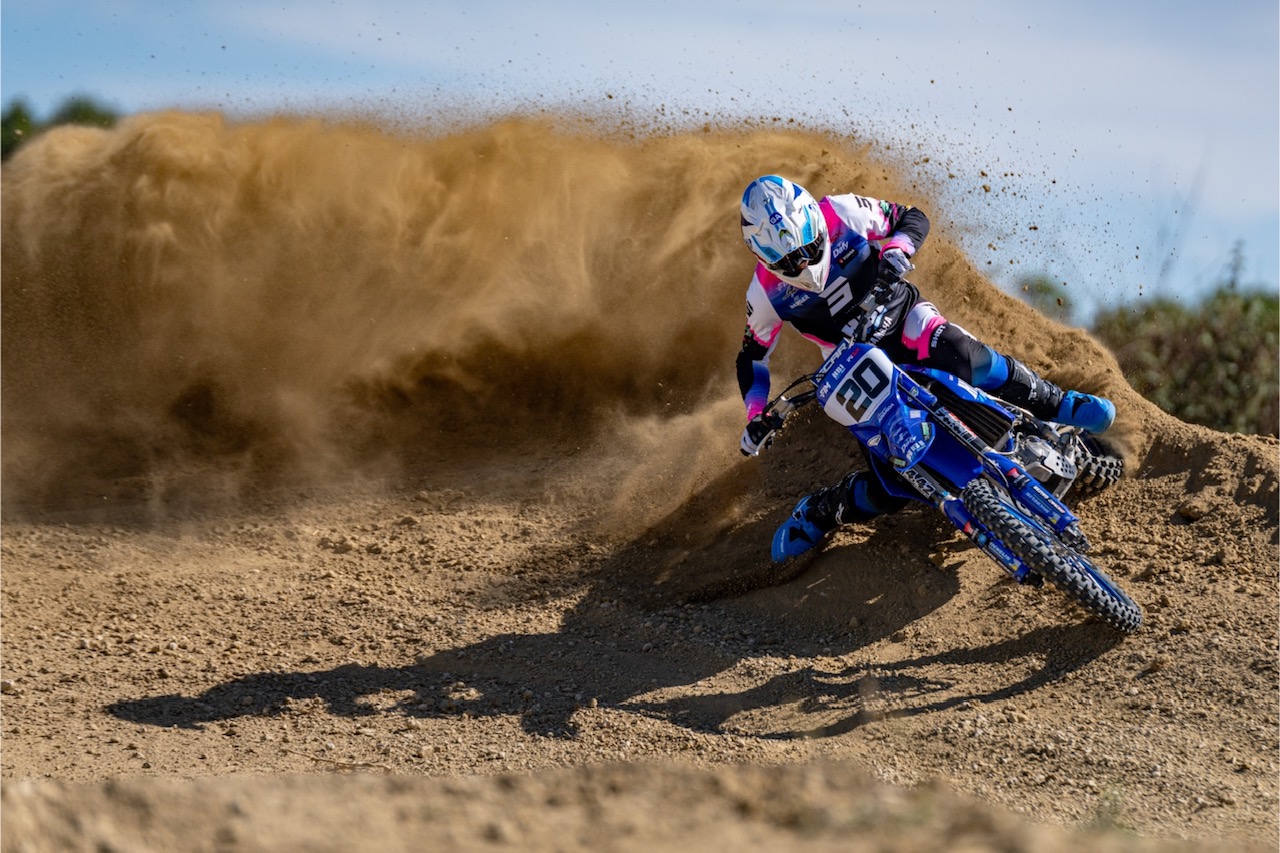
You established a good base in 2022. But it seemed all the pieces of the puzzle fell in place after joining GSM Yamaha last season?
Aranda: “Definitely. The team has a great physical trainer in Didier Rochette who’s always there. I like the bike, Serge Guidetty who’s the team manager has a lot of experience and he’s super involved. There’s support and followup about every aspect. And of course everyone on the team works hard to get results. And it certainly pays off. Compared to last year I feel that I still made another step in performance.”
Have guys like Brayton and Reed inspired you to keep pushing?
Aranda: “Yes, these riders have proven that it’s possible to be very competitive late in their career. In general I would say that there are a lot of elite athletes now that shine at an older age. Not only in motocross or supercross, also in tennis or running. In the Olympics all three medal winners at the marathon were over 33 for example. I think a lot depends on your approach and what you’ve been doing before. Like I mentioned, before I was never invested 100%. Mentally I don’t feel a limit because of my age. Also, I still have plenty of energy to continue.”
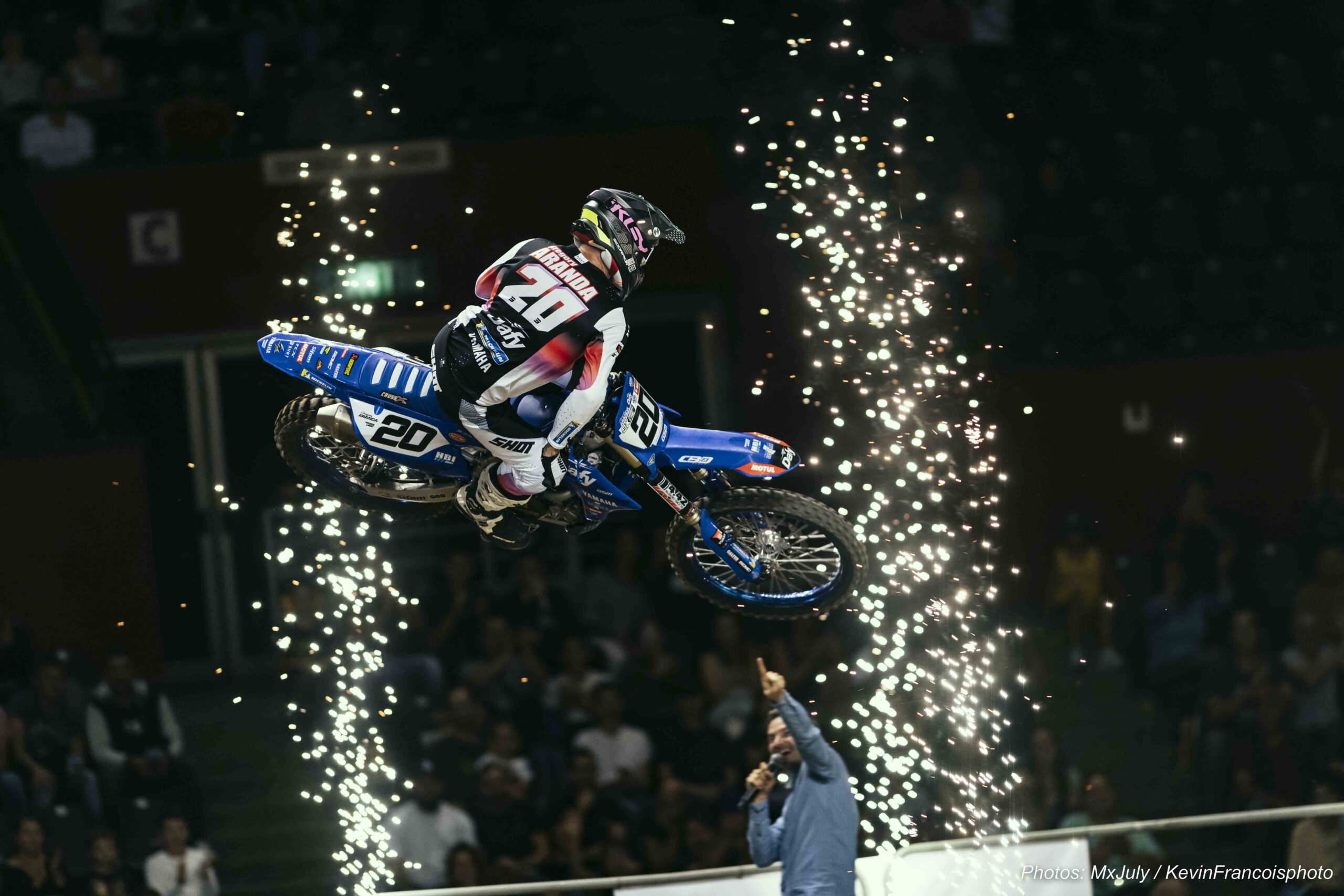
Are you aware of the fact that you’ve become a sort of cult hero? A spectacular rider with a
unique talent on the bike. For sure this is the case among French fans, but even American SX riders whom you wouldn’t expect to follow European racing are genuinely impressed by your style.
Aranda: “It’s obviously nice to be seen like that. I think it goes back a long way too. In terms of pure speed I made a lot of pole positions. Even in MX1 I was regularly upfront in time practice, posting a top-5 lap time. Only I couldn’t capitalize on that speed during the motos where my best results were top-10 placements. So not in line with the raw speed that I showed in qualifying or free practice. Same thing at Paris Supercross where I won Superpole. Fortunately I can now maintain my hot lap pace longer so I’m really looking forward to Paris SX this year! If your hear the Lawrence brothers praise you for my Superpole or how much joy this brings to fans, that’s very satisfying. On one lap I’m able to put all ingredients together to come close to that perfect lap. To pull off that same rhythm for a full moto is a big, big ask. However that’s what we work towards.”
You always had this ability to put down the hammer for one lap?
Aranda: “Yes and no. One thing is certain that it’s a challenge that I like. You have to strike the balance between going all-in without making mistakes. It’s hard compromise to find. And there’s the mental aspect too. Especially in a stadium you can feel the expectations of the crowd. You’ve pulled it of before so people expect you to do it again. My first GP season has also something to do with it I believe. Back then they had introduced qualifying races in MX2. If you didn’t qualify, you were relegated to last Chance Qualifying Practice. Because it was my first year in the world championship I was frequently in the Last Chance where you needed to ride against top riders like Tommy Searle, Marc de Reuver or Davide Guarneri when they had encountered trouble in the qualifying race. Only the six fastest times raced on Sunday so you do to go all-in to qualify. I think that stayed with me. And in practice I worked hard on my hot laps as well.”
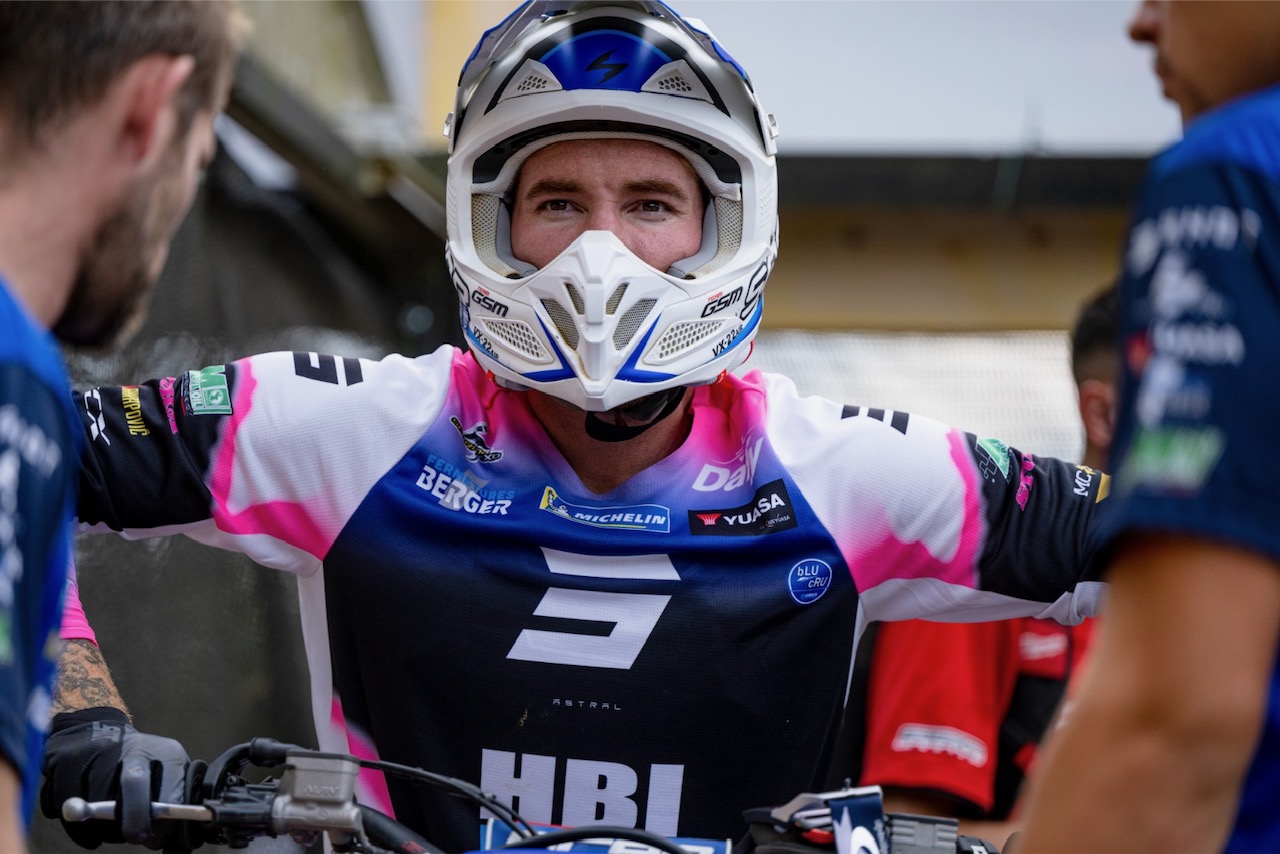
At 16 you joined Christophe and Sébastien Pourcel at GPKR Kawasaki. How was that for you?
Aranda: “It was tough. Christophe was quite character although we got along quite well. I got along with Sébastien too and the team was good. However I was very inexperienced at that point. I actually entered the team when I was only 15. Living alone in Belgium was hard for me. Everything was different. Those were difficult years personally and at a certain moment I had wanted to stop racing. In 2008 I signed with Jean-Jacques Luisetti and CLS Kawasaki who were based in the south of France, much closer to home. That definitely gave me a morale boost.”
You first grabbed the limelight at CLS in that first season.
Aranda: “Exactly. The team was good and the bike was performant even when it was clearly not a factory bike. I finished 6th at the French GP and managed a few more highlights at CLS which was great given the standard base of our bikes.”
French motocross riders really started to take over the scene in the world championship around that time. There was a quality and depth that’s rare. Several times six French MX2 riders made the top-10 at their home GP. How was it to be part of that French wave of talent?
Aranda: “We were not all similar in age but the competition among French riders certainly pushed us to get better. On top of that the infrastructure put in place by the French federation had started to pay off. Coming through the ranks from Miniverts (80cc) to Cadet and Junior proved to be this sort of production line for GP talent! The Federation brought the most talented kids together for training and many French riders succeeded in the World Championship. As a result the level in the Elite championships rose, consequently you had to be on the gas all the time!”
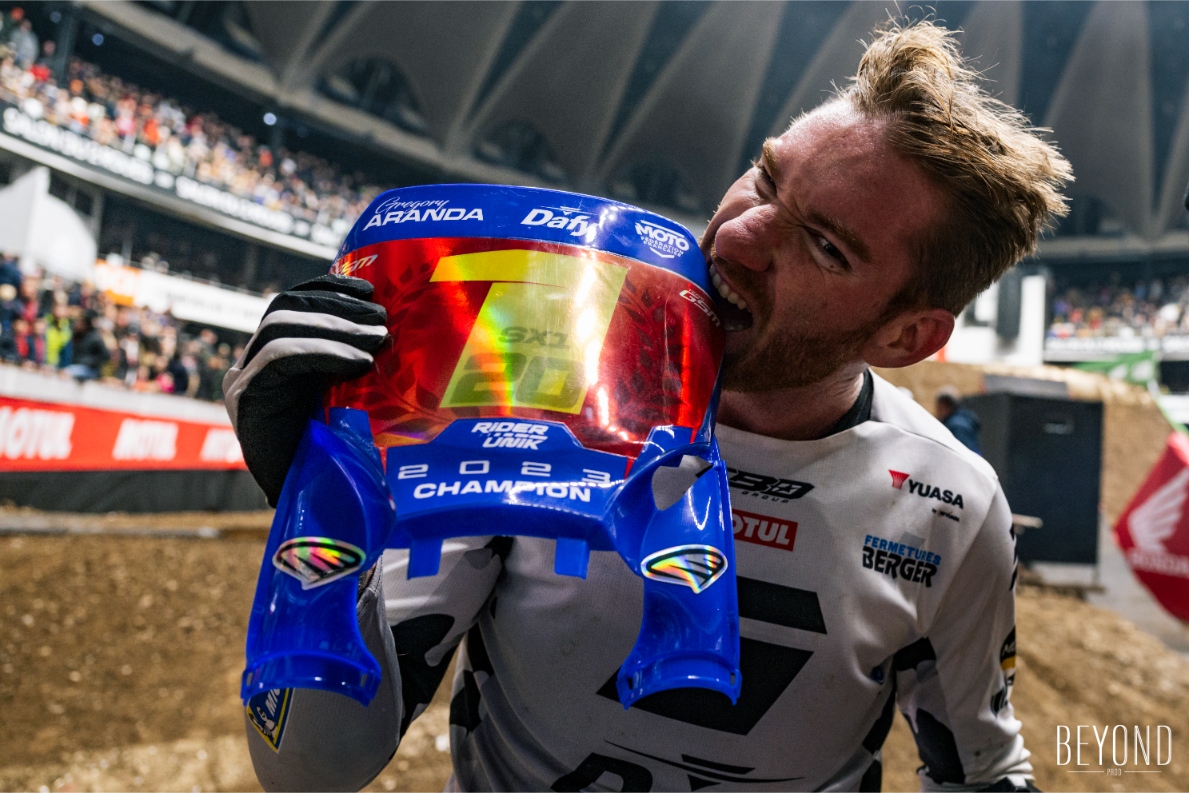
When did you discover you’re knack for supercross?
Aranda: “When I was riding 80cc I already rode a lot of supercross. I had my own SX track and I totally loved supercross! Because most GP teams were not keen on Supercross, out of fear for injuries, I stopped riding for a bit. Things changed at Bud Racing Kawasaki where they considered supercross just as important as motocross. So I started riding more Supercross again. I won the European SX title, did SX Paris and the French SX Tour. So basically I always liked Supercross but it was more a question of finding the right opportunities.”
In all these years of competing who’s the team mate that impressed you most?
Aranda: “Christophe Pourcel. He was special. Not in the least because of his mental games! He took pleasure in feeding fake news let’s say! That he never trained, or when he practiced it would have been somewhere hidden away so no one knew. (Smiles) Man, I could write a book about that guy! Then there was Steven Frossard. At times I would smoke him in practice and be 3 seconds faster than him. A few days later during a GP weekend he was really able to turn it on. Out of nowhere he would be 2 seconds faster than me. Steven would transcend himself when it mattered in a way that really impressed me. Even when he was not particularly feeling it he could step it up in qualifying when he hooked up to Tony Cairoli or who else was flying on that particular track to set the 2nd or 2rd time. Hanging on to their rear wheel he pulled off amazing things. At Bud Racing I had Davide Guarneri as a team mate and he was super strong physically. A real Iron man! On the bike Nicolas Aubert was gifted too. So yeah, all in all I had the chance to ride alongside some great guys.”
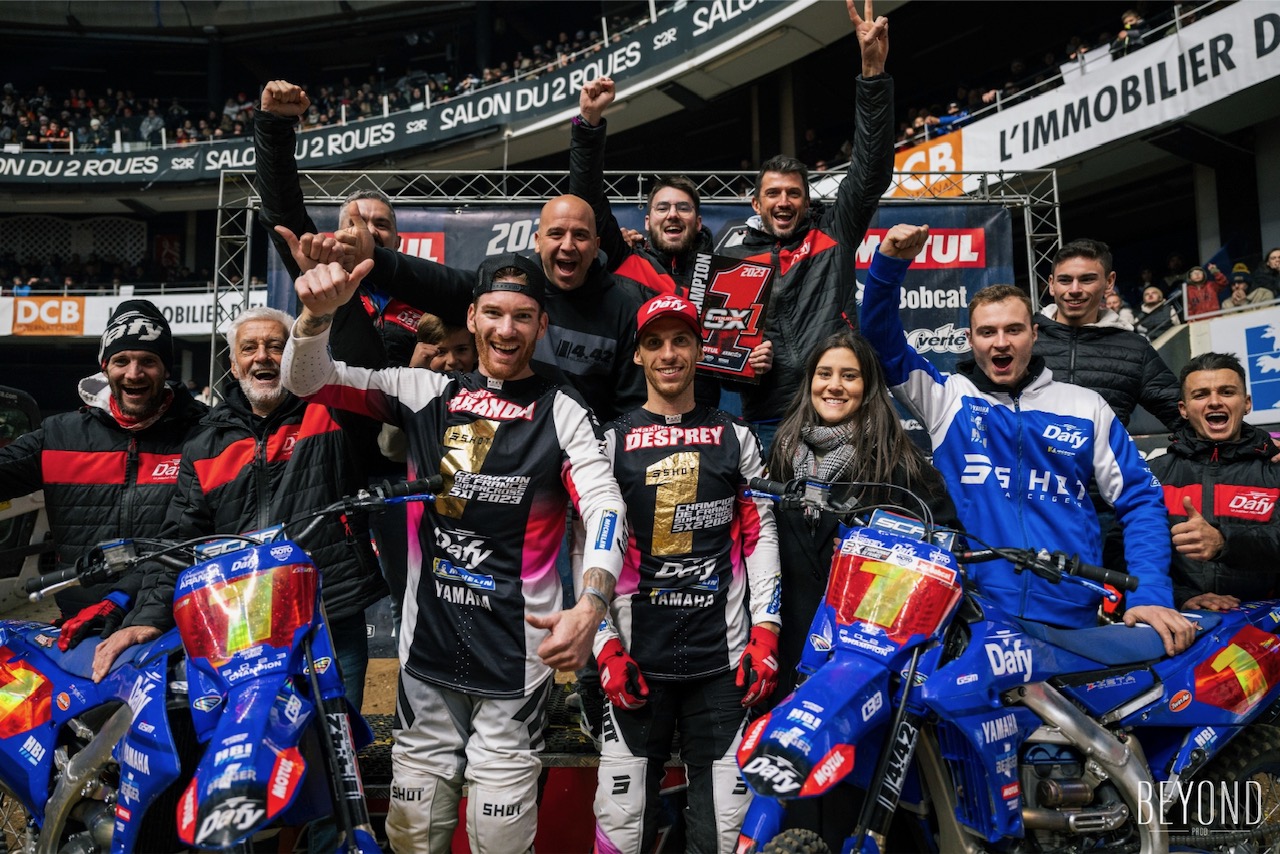
From all riders who make the jump from GP’s to AMA Supercross it’s not always super clear to predict who will succeed. Did you anticipate the success that Dylan Ferrandis had in the US?
Aranda: “I got to know Dylan at a very young age when he arrived at Bud Racing to ride 125cc. Even at that time he only was talking about supercross. Dylan had very clear objectives and already he was mentally very, very strong. Even when he was on 125cc he wanted to beat me on the MX1 bike and Nicolas Aubin on the MX2 bike in practice. We both had a pretty good speed so to see this young kid who wants to take on that kind of challenge was pretty funny to us. On the other hand I think that’s the strong will and fierce determination that allowed him to win four important titles in the US.”
Stepping back in time what would the current Greg tell his 16-year old self?
Aranda: “You always have regrets about things that you could’ve done better. Who knows where I would have been if I worked as hard as I do now early on? We will never now. An athlete’s career is fragile and complicated. What about the bikes that I rode and the teams that I rode for. Sometimes you just miss out on the type of deal that could have changed a lot. The only thing that I could give as advice would be to enter the World championship a bit later. In 2007 Gautier Paulin and Marvin Musquin were winning in EMX250 -we’re part of the same generation- while I was struggling in MX2 because I was not ready yet. Mentally it’s tough to see riders you’ve been beating in junior classes succeeding in EMX250 and for me it was hard to qualify for every GP. “
With Bud Racing Kawasaki you did a one-off race in 450SX at Anaheim 1 in 2010. You qualified 7th in your heat race and went on to finish 13th in the main. That’s a pretty solid debut I would say. You were only 20 and very inexperienced in American Supercross so there was a lot of room for improvement. It’s remarkable that you only did one AMA Supercross!
Aranda: “The year after that Kawasaki US contacted me as a replacement rider for Jake Weimer on the Kawa factory bike. Right before the 2011 SX season Jake had broken his arm in practice. Unfortunately for political reasons I couldn’t do it. Bud Racing was associated with Rockstar Energy and Kawasaki US already had their Monster Energy deal. In the end Fabien Izoird replaced him. That was a big bummer. After I didn’t get any other opportunities to race in the US.”
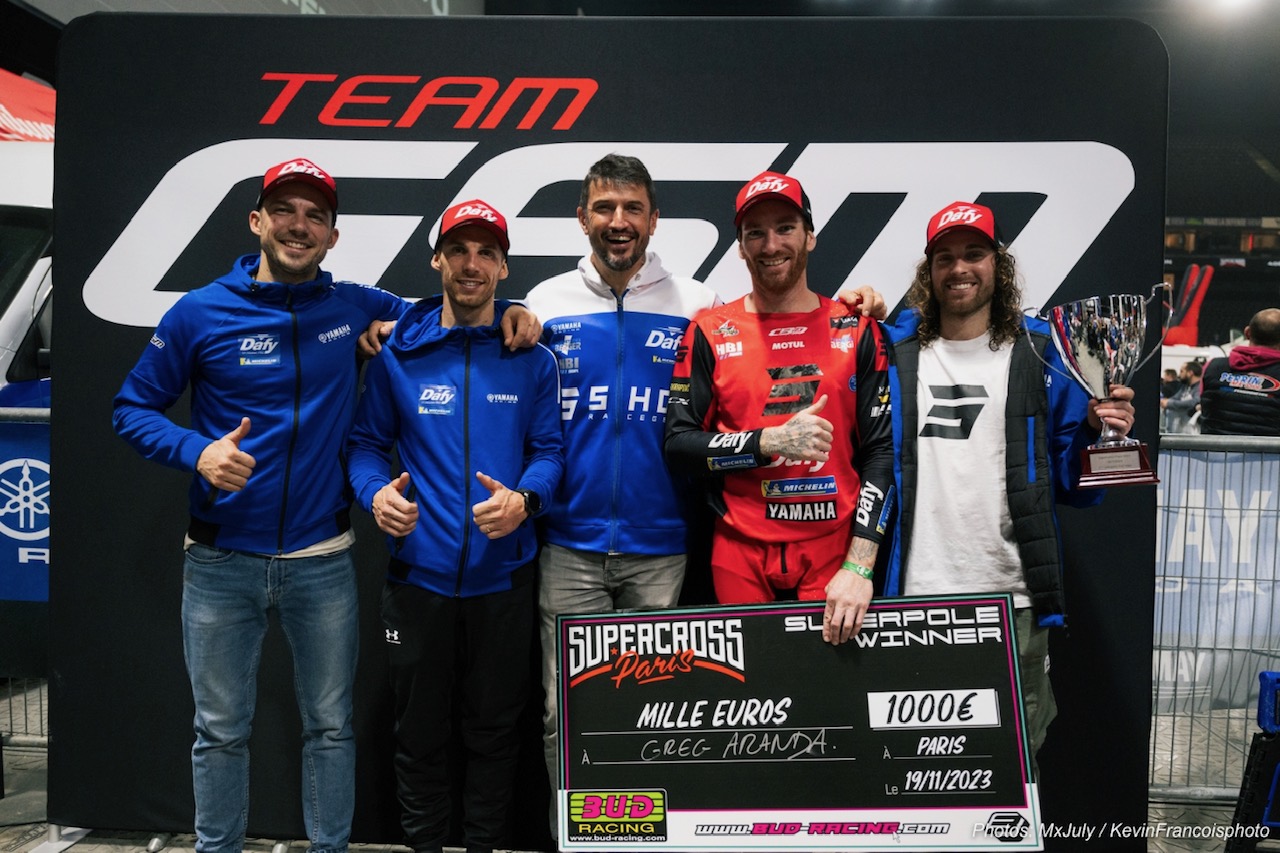
Back to the now. What is it that makes Serge Guidetty so effective? Maxime Desprey is riding better than ever, Thomas Ramette and Anthony Bourdon did well with at his team. Jace Owen and Carson Brown talked highly about his squad after their World Supercross campaigns.
Aranda: “Serge used to race supercross himself. First of all he’s very attentive to the needs of his riders. Secondly Serge has created a great atmosphere in his team and he goes all the way to provide us with what we need. I already mentioned Didier, our physical trainer earlier. Another example, if we have training camps he comes out with the truck and mechanics to leave nothing to chance. To be as competitive as possible for World SX the GSM Yamaha team stepped up the tuning of the bikes. Overall, it’s a big, big commitment for a private team.”
At the end of the month World Supercross kicks off with the Canadian GP in Vancouver. What do you think about the format of the races?
Aranda: “It’s intense with the finals following each other quickly! The racing in WSX is very close but there’s a lot of emphasis on the starts because the races are short. That’s a disadvantage for me because I’m not the best starter. Each time I need to come from the back and the only time when I did manage a good start -last year in the second final in Melbourne- I was fighting for the win to come second behind Ken Roczen. To get three good results is very complicated. In Melbourne I just missed out on the podium to finish 5th behind Dean Wilson and Joey Savatgy. It’s obvious that I need to improve my starts to make the podium so that’s what’ve been working on.”
What’s your overall goal for World Supercross this season?
Aranda: “Honestly, we’re so closely matched that I don’t want to get ahead of myself. I’ll take things race by race. The goal is always to make the podium and to have fun while we’re out there. Beating Eli Tomac or Ken Roczen is never easy so we have to see what shape the others arrive in. Logically the next step for me is to enter the top-5 overall after my 6th place last year. And ideally I’d like to see how close I can get to the overall podium.”
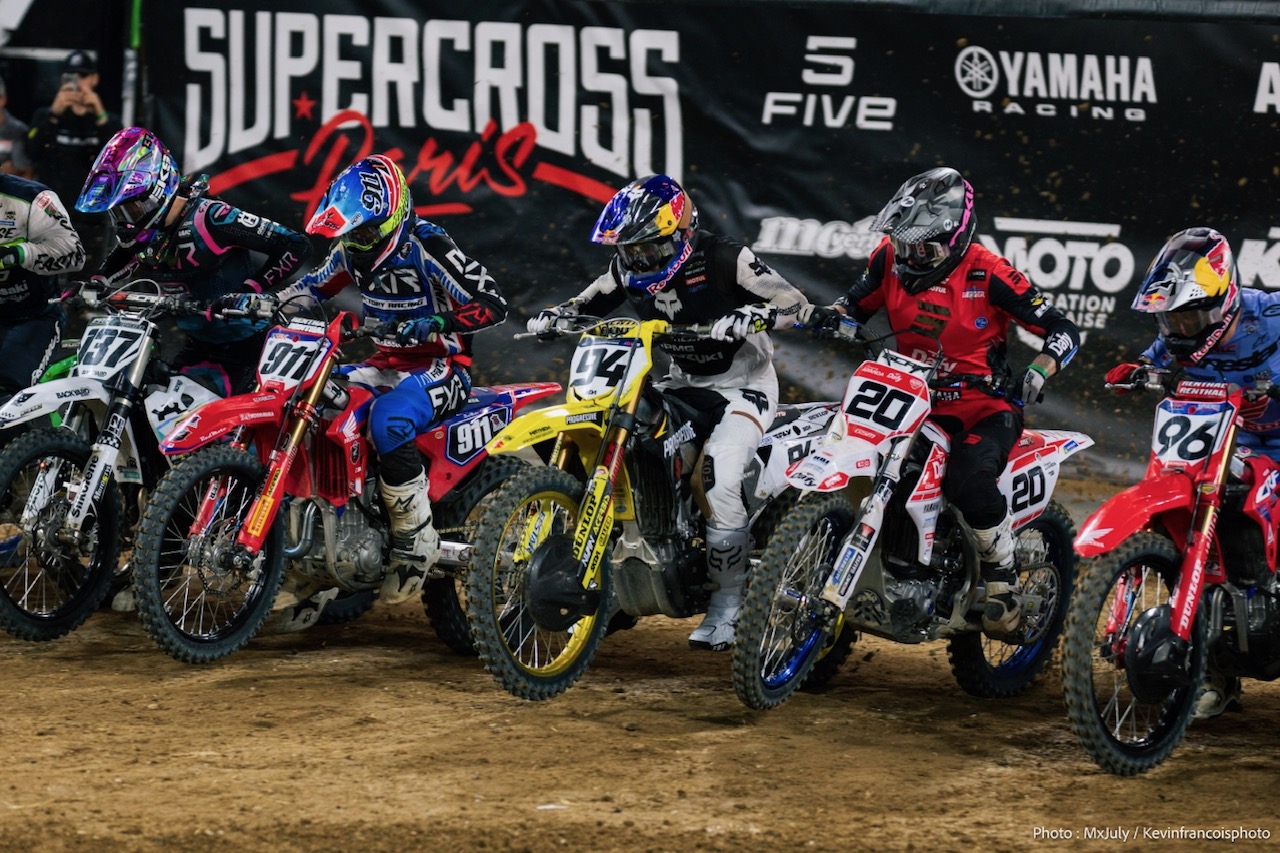
Especially in your case – so late in your career – it must be amazing finally to show your talents on this huge stage that is World Supercross?
Aranda: “Oh man, you’re right, it’s a great thrill. Not only for me but for everyone involved. We’re riding in cool stadiums at interesting locations all over the world. Moreover World Supercross is super well organized so as rider you feel very welcome and respected. That’s a very satisfying feeling.”
Your big on interaction with the crowd. Is that something that fuels you?
Aranda: “Sure, supercross is a sport but there’s always an element of show. Wherever you are on the track you’re close to the fans. The intensity and technicality are right up my alley too. Of course MXGP is very technical as well but the physical aspect is hugely important. Someone who’s super fit can make up for some shortcomings in their riding style. In supercross the room for error is so much smaller. You have to be very precise to go fast. And you have to keep that concentration for the full race. That’s what I like about it.”
You’ve never been afraid to send it. At Sommières and Valence you were the first to open a new combination with your signature leap. It takes a special kind of rider to launch it big like that.
Aranda: “Each time I did something like that particular jump stayed associated with my name! Every time when we arrive at a new track I’m one of the first to go for the big jumps. It’s a challenge that I love, and it’s fun.”
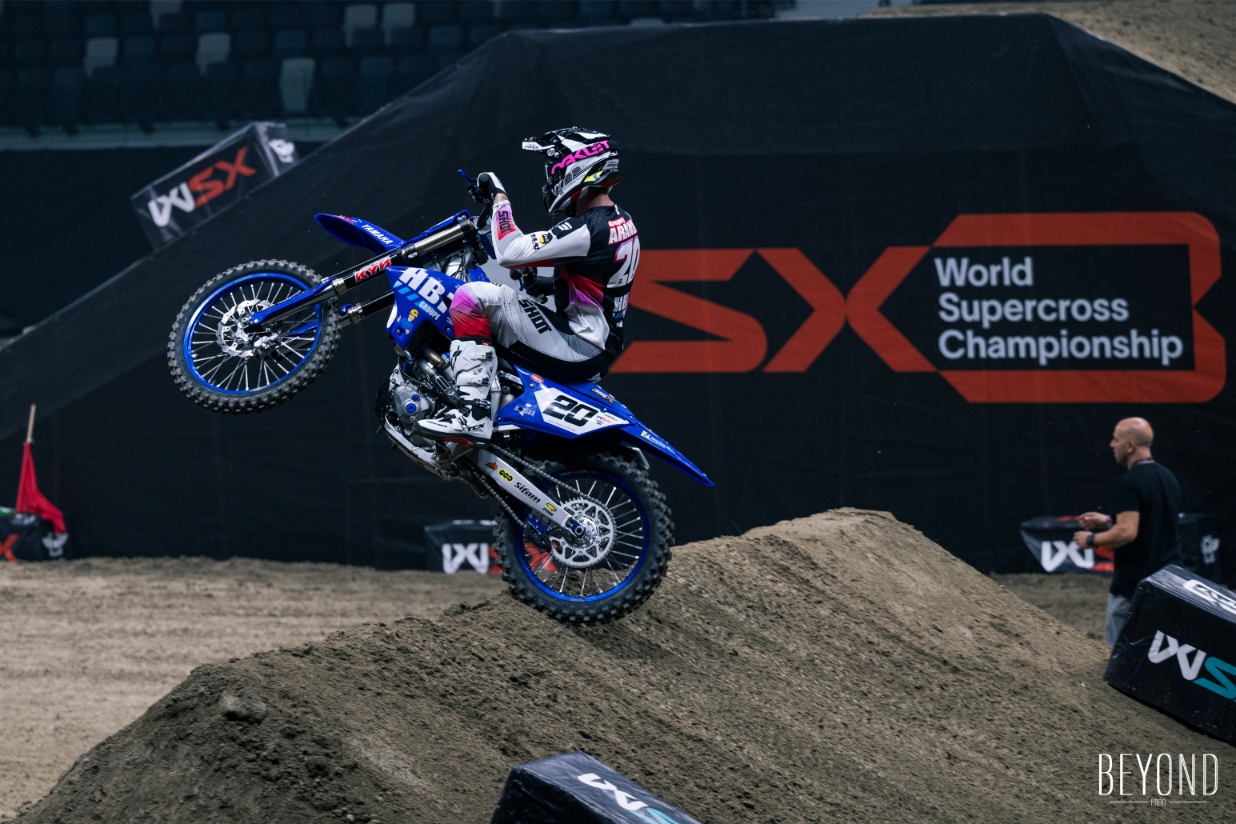
Together with your team mate Maxime Desprey in SX2 you’re dominating French Supercross. At 31 his a veteran himself. Is it easier to give honest feedback to each other in a situation like that?
Aranda: “For starters, things are bit easier for us because we race in different classes. Maxime always rides before me so he can give me some pointers about how the track has evolved. When I see him ride there are always a few things that I can tell him so that’s cool. In the French motocross championship we were both fighting for the MX1 title this season so that’s another situation. However we have a lot of respect for each other so all went well there and Maxime rode a strong season. He won the title and I finished third. That’s great for the team. Max is very grounded, there’s no hidden agenda. All of that helps with the atmosphere within the team. I get along well with Lucas Imbert and our new rider Julien Lebeau too.”
At times in he past riders where very much each preparing in their own corner, with their own program. Even when they rode for their own team.
Aranda: “I think we found a good balance. For sure riding and training together is motivating. You’re pushing each other so everyone is improving. However when you’re battling in practice every almost every single day things can get awkward quickly. We live in different parts of the country as well. So to get together during training camps at different moments of the year works out well. You’re right, at least speaking for my time in GPs. Each rider would in the team would keep himself to himself. Which was also a matter of not showing too much, holding your cards close to your chest so to speak.”
Ten years ago you tried your hand at enduro when you were riding for 2B Yamaha. How as that?
Aranda: “It was a really interesting experience. I did Le Trèfle, a French championship race and the last EnduroGP round at Brioude. I felt quite competitive because I made the podium in the French championship and got a 4th in E2 at the EnduroGP round. I was in touch with Beta to do more but eventually I decided that my heart lies is still more with supercross and motocross. Frankly I keep the option open to return to enduro. So after my SX days are over it would be fun to return to enduro.”
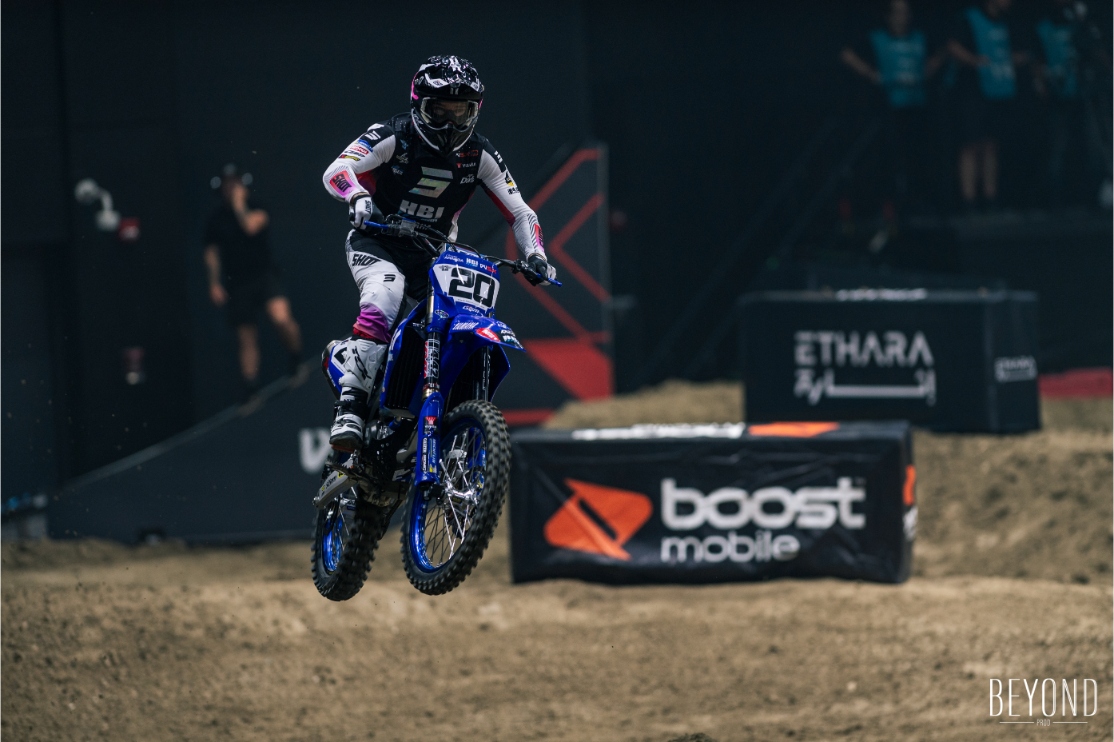
There’s a bunch of SX specialists like yourself Cédric Soubeyras, Angelo Pellegrini, Maxime Desprey, Anthony Bourdon, Thomas Ramette, Harri Kullas who’ve leading the way in the European Supercross scene. It’s strange that there are so few young guns rising to the top.
Aranda: “I agree. It’s a while now that we see the same guys upfront. In France, the SX Tour is very conscious about the situation. They launch the 125cc Junior class which goes beyond just another category in the championship. They organize initiation camps to allow inexperienced riders to get familiar with supercross. I think things are moving in the right direction. However the core of the problem remains the same as ever in Europe. Teams over here forbid their riders to race supercross. Looking at the amazing season that Jorge Prado had in MXGP I don’t think that the four races he did in AMA Supercross hurt his chances! On the contrary, he arrived in the world championship this year with a spring in his step. Hopefully, team managers start to think about this to leave their riders some freedom to do supercross. There’s no doubt that SX experience is a great asset for a motocross rider when it comes to technique and precision. I’m talking about the little details that sometimes get lost when you’re racking up the 40 minute motos to get fit. Purely talking about riding skills Prado was a step ahead of Gajser, Herlings and Febvre when he started his MXGP season. Impressive!”
You’ve been working on a retirement plan in taking over a local track in the south of France, MC Des Costières (Beauvoisin). Did the time on the bulldozer prepping the track learn you anything new?
Aranda: “Ha I wish, no not really. When I was out due to my health problems in 2020 I had to find something new to do. As far as I was concerned my riding days were over so I took over the management of my local track in Beauvoisin. The timing was perfect because the president of the club felt it was time for something else in his life. Everything went well but as far as track prep goes it’s not my personal track with the challenges that I need to get better. We want to offer a fun accessible track that riders from all levels can enjoy. I actually made the jumps more tame so it’s maybe the opposite of what you were thinking! For high-level riders the track is not tough enough because we always flatten everything. In our case we can’t survive by focusing only on elite riders.”

In general the frontrunners treat each other with respect in the French SX Tour but on tight tracks like this of German Supercross, Arenacross UK or even in World Supercross things get heated at times. Should we have more rules to ensure fair racing?
Aranda: “On a smaller layout there’s often no other way to pass than to be forceful or make your move with a blockpass. A. That type of contact is part of racing indoors. And B. the speed that we do in those corners is slow so the crashes that do happen are never very bad. So no I don’t think that we need stricter rules. I’m sure that if someone crosses the line sanctions will follow. Obviously we’re putting up a show so you need some salt and pepper to entertain the fans!”
You’re one of the most successful riders ever in ADAC Supercross. What’s the secret to your strong run in Germany?
Aranda: “I like the racing over there. It’s exciting and the fact that they bring in strong American riders like keeps things fresh. Over the years I had some nice battles in ADAC, for example with Jace Own, so it’s always fun to go over there. I’ve been riding for Sturm Racing for many years in Germany and it’s a great team. There’s a really nice friendship with the Sturm family so that makes it even more personal. They even support me as a personal sponsor when I’m racing for GSM Yamaha. Years ago I did some full seasons for them where I did ADAC MX Masters and ADAC Supercross. Last but not least they allow me to run the bike brand that I used in France which makes the transition between French SX and German SX very comfortable.”
The other longstanding love affair you have is the one with Paris Supercross.
Aranda: “It’s hard to describe and for sure it’s even more emotional because I’m racing there in front of my home fans. It gives me goosebumps talking about it. Supercross Paris is the biggest SX race outside of the US. It’s an icon in it’s own right in the coolest capital of the world! Whether it was in Bercy, even In Lille or now at La Défense Arena… There’s magic in the air you know. SX Paris will mark its 40th anniversary this year and I’m stoked to be part of that. Fans from all over France and all over Europe come to Paris to celebrate Supercross and see the best riders from the US and Europe. I have so many great memories about SX Paris and I’d like to make some more!”

I’m not sure how many gatedrops you had in your career but is the feeling of anticipation and stress still the same?
Aranda: “It’s always special, I don’t think that will every go away. I think it will never be an everyday thing like going to get a bread for example! The engine noises, the vibration of the bike, your body and mind on full alert with adrenalin flowing… That’s still a big thrill. Sure, with age you learn to better manage your nerves. The experience allows you to put things in perspective. You say to yourself: I’ve been through this before. The stress that I experience now hasn’t kept me from performing at my best level so it will be allright now as well.”
Your body and mind are talking -or rather shouting- each in their own way, at the same time in stressful times like that.
Aranda: “Absolutely! Right before a race there’s always a million questions in your head. Am I ready for this? Is my speed okay? Is the bike good? Will I be able to do what people expect from me? Everybody calls me Mr. Superpole. So every single race -whether it’s a small, local event, Paris Supercross or wherever they have a Superpole when I’m there- people are looking at me to deliver. That’s a real pressure. As if the Superpole is organized just for me! Some fans are wondering what’s wrong with me when I get 2nd.”
Thanks for your time Greg, good luck with the new SX season!
Aranda: “You’re welcome. We’re going for it, be sure to follow me on Instagram if you want to stay up to date.”
Words: Tom Jacobs
Photos: MXJuly/Kevin François – Beyond productions Archive images: ADAC Wuerttemberg, Jan Brucke – ADAC, Verot, Mediacross

